CompletableFuture使用详解(IT枫斗者)
CompletableFuture使用详解
简介
概述
-
CompletableFuture是对Future的扩展和增强。CompletableFuture实现了Future接口,并在此基础上进行了丰富的扩展,完美弥补了Future的局限性,同时CompletableFuture实现了对任务编排的能力。借助这项能力,可以轻松地组织不同任务的运行顺序、规则以及方式。从某种程度上说,这项能力是它的核心能力。而在以往,虽然通过CountDownLatch等工具类也可以实现任务的编排,但需要复杂的逻辑处理,不仅耗费精力且难以维护。
-
CompletableFuture的继承结构如下: -
![[外链图片转存失败,源站可能有防盗链机制,建议将图片保存下来直接上传(img-a61HTSe5-1680694141534)(C:%5CUsers%5Cquyanliang%5CAppData%5CRoaming%5CTypora%5Ctypora-user-images%5C1680692539301.png)]](https://img-blog.csdnimg.cn/d35668d1665f47a5a7ac12a6a6e3b392.png)
-
CompletionStage接口定义了任务编排的方法,执行某一阶段,可以向下执行后续阶段。异步执行的,默认线程池是ForkJoinPool.commonPool(),但为了业务之间互不影响,且便于定位问题,强烈推荐使用自定义线程池。 -
CompletableFuture中默认线程池如下: -
// 根据commonPool的并行度来选择,而并行度的计算是在ForkJoinPool的静态代码段完成的 private static final boolean useCommonPool =(ForkJoinPool.getCommonPoolParallelism() > 1);private static final Executor asyncPool = useCommonPool ?ForkJoinPool.commonPool() : new ThreadPerTaskExecutor(); -
ForkJoinPool中初始化commonPool的参数 \ -
static {// initialize field offsets for CAS etctry {U = sun.misc.Unsafe.getUnsafe();Class<?> k = ForkJoinPool.class;CTL = U.objectFieldOffset(k.getDeclaredField("ctl"));RUNSTATE = U.objectFieldOffset(k.getDeclaredField("runState"));STEALCOUNTER = U.objectFieldOffset(k.getDeclaredField("stealCounter"));Class<?> tk = Thread.class;……} catch (Exception e) {throw new Error(e);}commonMaxSpares = DEFAULT_COMMON_MAX_SPARES;defaultForkJoinWorkerThreadFactory =new DefaultForkJoinWorkerThreadFactory();modifyThreadPermission = new RuntimePermission("modifyThread");// 调用makeCommonPool方法创建commonPool,其中并行度为逻辑核数-1common = java.security.AccessController.doPrivileged(new java.security.PrivilegedAction<ForkJoinPool>() {public ForkJoinPool run() { return makeCommonPool(); }});int par = common.config & SMASK; // report 1 even if threads disabledcommonParallelism = par > 0 ? par : 1; }
功能
常用方法
-
依赖关系
- thenApply():把前面任务的执行结果,交给后面的Function
- thenCompose():用来连接两个有依赖关系的任务,结果由第二个任务返回
-
and集合关系
thenCombine():合并任务,有返回值thenAccepetBoth():两个任务执行完成后,将结果交给thenAccepetBoth处理,无返回值runAfterBoth():两个任务都执行完成后,执行下一步操作(Runnable类型任务)
or聚合关系
applyToEither():两个任务哪个执行的快,就使用哪一个结果,有返回值acceptEither():两个任务哪个执行的快,就消费哪一个结果,无返回值runAfterEither():任意一个任务执行完成,进行下一步操作(Runnable类型任务)
-
并行执行
allOf():当所有给定的 CompletableFuture 完成时,返回一个新的 CompletableFutureanyOf():当任何一个给定的CompletablFuture完成时,返回一个新的CompletableFuture
-
结果处理
- whenComplete:当任务完成时,将使用结果(或 null)和此阶段的异常(或 null如果没有)执行给定操作
- exceptionally:返回一个新的CompletableFuture,当前面的CompletableFuture完成时,它也完成,当它异常完成时,给定函数的异常触发这个CompletableFuture的完成
异步操作
-
CompletableFuture提供了四个静态方法来创建一个异步操作: -
public static CompletableFuture<Void> runAsync(Runnable runnable) public static CompletableFuture<Void> runAsync(Runnable runnable, Executor executor) public static <U> CompletableFuture<U> supplyAsync(Supplier<U> supplier) public static <U> CompletableFuture<U> supplyAsync(Supplier<U> supplier, Executor executor) -
这四个方法的区别:
-
runAsync() 以Runnable函数式接口类型为参数,没有返回结果,supplyAsync() 以Supplier函数式接口类型为参数,返回结果类型为U;Supplier接口的 get()是有返回值的(会阻塞)
-
使用没有指定Executor的方法时,内部使用ForkJoinPool.commonPool() 作为它的线程池执行异步代码。如果指定线程池,则使用指定的线程池运行。
-
默认情况下CompletableFuture会使用公共的ForkJoinPool线程池,这个线程池默认创建的线程数是 CPU 的核数(也可以通过 JVM option:-Djava.util.concurrent.ForkJoinPool.common.parallelism 来设置ForkJoinPool线程池的线程数)。如果所有CompletableFuture共享一个线程池,那么一旦有任务执行一些很慢的 I/O 操作,就会导致线程池中所有线程都阻塞在 I/O 操作上,从而造成线程饥饿,进而影响整个系统的性能。所以,强烈建议你要根据不同的业务类型创建不同的线程池,以避免互相干扰
-
异步操作
-
Runnable runnable = () -> System.out.println("无返回结果异步任务"); CompletableFuture.runAsync(runnable);CompletableFuture<String> future = CompletableFuture.supplyAsync(() -> {System.out.println("有返回值的异步任务");try {Thread.sleep(5000);} catch (InterruptedException e) {e.printStackTrace();}return "Hello World"; }); String result = future.get(); -
获取结果(join&get)
-
join()和get()方法都是用来获取CompletableFuture异步之后的返回值。join()方法抛出的是uncheck异常(即未经检查的异常),不会强制开发者抛出。get()方法抛出的是经过检查的异常,ExecutionException, InterruptedException 需要用户手动处理(抛出或者 try catch)
-
结果处理
-
当CompletableFuture的计算结果完成,或者抛出异常的时候,我们可以执行特定的 Action。主要是下面的方法:
-
public CompletableFuture<T> whenComplete(BiConsumer<? super T,? super Throwable> action) public CompletableFuture<T> whenCompleteAsync(BiConsumer<? super T,? super Throwable> action) public CompletableFuture<T> whenCompleteAsync(BiConsumer<? super T,? super Throwable> action, Executor executor) -
Action的类型是BiConsumer<? super T,? super Throwable>,它可以处理正常的计算结果,或者异常情况。
-
方法不以Async结尾,意味着Action使用相同的线程执行,而Async可能会使用其它的线程去执行(如果使用相同的线程池,也可能会被同一个线程选中执行)。
-
这几个方法都会返回CompletableFuture,当Action执行完毕后它的结果返回原始的CompletableFuture的计算结果或者返回异常
-
CompletableFuture<String> future = CompletableFuture.supplyAsync(() -> {try {TimeUnit.SECONDS.sleep(1);} catch (InterruptedException e) {}if (new Random().nextInt(10) % 2 == 0) {int i = 12 / 0;}System.out.println("执行结束!");return "test"; }); // 任务完成或异常方法完成时执行该方法 // 如果出现了异常,任务结果为null future.whenComplete(new BiConsumer<String, Throwable>() {@Overridepublic void accept(String t, Throwable action) {System.out.println(t+" 执行完成!");} }); // 出现异常时先执行该方法 future.exceptionally(new Function<Throwable, String>() {@Overridepublic String apply(Throwable t) {System.out.println("执行失败:" + t.getMessage());return "异常xxxx";} });future.get(); -
上面的代码当出现异常时,输出结果如下
-
执行失败:java.lang.ArithmeticException: / by zero null 执行完成!
应用场景
结果转换
- 将上一段任务的执行结果作为下一阶段任务的入参参与重新计算,产生新的结果。
thenApply
-
thenApply接收一个函数作为参数,使用该函数处理上一个CompletableFuture调用的结果,并返回一个具有处理结果的Future对象。 -
常用使用:
-
public <U> CompletableFuture<U> thenApply(Function<? super T,? extends U> fn) public <U> CompletableFuture<U> thenApplyAsync(Function<? super T,? extends U> fn) -
具体使用:
-
CompletableFuture<Integer> future = CompletableFuture.supplyAsync(() -> {int result = 100;System.out.println("第一次运算:" + result);return result; }).thenApply(number -> {int result = number * 3;System.out.println("第二次运算:" + result);return result; });
thenCompose
-
thenCompose的参数为一个返回CompletableFuture实例的函数,该函数的参数是先前计算步骤的结果。 -
常用方法:
-
public <U> CompletableFuture<U> thenCompose(Function<? super T, ? extends CompletionStage<U>> fn); public <U> CompletableFuture<U> thenComposeAsync(Function<? super T, ? extends CompletionStage<U>> fn) ; -
具体使用:
-
CompletableFuture<Integer> future = CompletableFuture.supplyAsync(new Supplier<Integer>() {@Overridepublic Integer get() {int number = new Random().nextInt(30);System.out.println("第一次运算:" + number);return number;}}).thenCompose(new Function<Integer, CompletionStage<Integer>>() {@Overridepublic CompletionStage<Integer> apply(Integer param) {return CompletableFuture.supplyAsync(new Supplier<Integer>() {@Overridepublic Integer get() {int number = param * 2;System.out.println("第二次运算:" + number);return number;}});}});
thenApply 和 thenCompose的区别:
- thenApply转换的是泛型中的类型,返回的是同一个CompletableFuture;
- thenCompose将内部的CompletableFuture调用展开来并使用上一个CompletableFutre调用的结果在下一步的CompletableFuture调用中进行运算,是生成一个新的CompletableFuture。
结果消费
- 与结果处理和结果转换系列函数返回一个新的
CompletableFuture不同,结果消费系列函数只对结果执行Action,而不返回新的计算值。 - 根据对结果的处理方式,结果消费函数又可以分为下面三大类:
thenAccept():对单个结果进行消费thenAcceptBoth():对两个结果进行消费thenRun():不关心结果,只对结果执行Action
thenAccept
-
观察该系列函数的参数类型可知,它们是函数式接口Consumer,这个接口只有输入,没有返回值。
-
常用方法:
-
public CompletionStage<Void> thenAccept(Consumer<? super T> action); public CompletionStage<Void> thenAcceptAsync(Consumer<? super T> action); -
具体使用:
-
CompletableFuture<Void> future = CompletableFuture.supplyAsync(() -> {int number = new Random().nextInt(10);System.out.println("第一次运算:" + number);return number;}).thenAccept(number ->System.out.println("第二次运算:" + number * 5));
thenAcceptBoth
-
thenAcceptBoth函数的作用是,当两个CompletionStage都正常完成计算的时候,就会执行提供的action消费两个异步的结果。 -
常用方法:
-
public <U> CompletionStage<Void> thenAcceptBoth(CompletionStage<? extends U> other,BiConsumer<? super T, ? super U> action); public <U> CompletionStage<Void> thenAcceptBothAsync(CompletionStage<? extends U> other,BiConsumer<? super T, ? super U> action); -
具体使用:
-
CompletableFuture<Integer> futrue1 = CompletableFuture.supplyAsync(new Supplier<Integer>() {@Overridepublic Integer get() {int number = new Random().nextInt(3) + 1;try {TimeUnit.SECONDS.sleep(number);} catch (InterruptedException e) {e.printStackTrace();}System.out.println("任务1结果:" + number);return number;} });CompletableFuture<Integer> future2 = CompletableFuture.supplyAsync(new Supplier<Integer>() {@Overridepublic Integer get() {int number = new Random().nextInt(3) + 1;try {TimeUnit.SECONDS.sleep(number);} catch (InterruptedException e) {e.printStackTrace();}System.out.println("任务2结果:" + number);return number;} });futrue1.thenAcceptBoth(future2, new BiConsumer<Integer, Integer>() {@Overridepublic void accept(Integer x, Integer y) {System.out.println("最终结果:" + (x + y));} });
thenRun
-
thenRun也是对线程任务结果的一种消费函数,与thenAccept不同的是,thenRun会在上一阶段CompletableFuture计算完成的时候执行一个Runnable,而Runnable并不使用该CompletableFuture计算的结果。 -
常用方法:
-
public CompletionStage<Void> thenRun(Runnable action); public CompletionStage<Void> thenRunAsync(Runnable action); -
具体使用:
-
CompletableFuture<Void> future = CompletableFuture.supplyAsync(() -> {int number = new Random().nextInt(10);System.out.println("第一阶段:" + number);return number; }).thenRun(() ->System.out.println("thenRun 执行"));
结果组合
thenCombine
-
合并两个线程任务的结果,并进一步处理。
-
常用方法:
-
public <U,V> CompletableFuture<V> thenCombine(CompletionStage<? extends U> other,BiFunction<? super T,? super U,? extends V> fn);public <U,V> CompletableFuture<V> thenCombineAsync(CompletionStage<? extends U> other,BiFunction<? super T,? super U,? extends V> fn);public <U,V> CompletableFuture<V> thenCombineAsync(CompletionStage<? extends U> other,BiFunction<? super T,? super U,? extends V> fn, Executor executor); -
具体使用:
-
CompletableFuture<Integer> future1 = CompletableFuture.supplyAsync(new Supplier<Integer>() {@Overridepublic Integer get() {int number = new Random().nextInt(10);System.out.println("任务1结果:" + number);return number;}}); CompletableFuture<Integer> future2 = CompletableFuture.supplyAsync(new Supplier<Integer>() {@Overridepublic Integer get() {int number = new Random().nextInt(10);System.out.println("任务2结果:" + number);return number;}}); CompletableFuture<Integer> result = future1.thenCombine(future2, new BiFunction<Integer, Integer, Integer>() {@Overridepublic Integer apply(Integer x, Integer y) {return x + y;}}); System.out.println("组合后结果:" + result.get());
任务交互
- 线程交互指将两个线程任务获取结果的速度相比较,按一定的规则进行下一步处理。
applyToEither
-
两个线程任务相比较,先获得执行结果的,就对该结果进行下一步的转化操作。
-
常用方法:
-
public <U> CompletionStage<U> applyToEither(CompletionStage<? extends T> other,Function<? super T, U> fn); public <U> CompletionStage<U> applyToEitherAsync(CompletionStage<? extends T> other,Function<? super T, U> fn); -
具体使用:
-
CompletableFuture<Integer> future1 = CompletableFuture.supplyAsync(new Supplier<Integer>() {@Overridepublic Integer get() {int number = new Random().nextInt(10);try {TimeUnit.SECONDS.sleep(number);} catch (InterruptedException e) {e.printStackTrace();}System.out.println("任务1结果:" + number);return number;}}); CompletableFuture<Integer> future2 = CompletableFuture.supplyAsync(new Supplier<Integer>() {@Overridepublic Integer get() {int number = new Random().nextInt(10);try {TimeUnit.SECONDS.sleep(number);} catch (InterruptedException e) {e.printStackTrace();}System.out.println("任务2结果:" + number);return number;} });future1.applyToEither(future2, new Function<Integer, Integer>() {@Overridepublic Integer apply(Integer number) {System.out.println("最快结果:" + number);return number * 2;} });
acceptEither
-
两个线程任务相比较,先获得执行结果的,就对该结果进行下一步的消费操作。
-
常用方法:
-
public CompletionStage<Void> acceptEither(CompletionStage<? extends T> other,Consumer<? super T> action); public CompletionStage<Void> acceptEitherAsync(CompletionStage<? extends T> other,Consumer<? super T> action); -
具体使用:
-
CompletableFuture<Integer> future1 = CompletableFuture.supplyAsync(new Supplier<Integer>() {@Overridepublic Integer get() {int number = new Random().nextInt(10) + 1;try {TimeUnit.SECONDS.sleep(number);} catch (InterruptedException e) {e.printStackTrace();}System.out.println("第一阶段:" + number);return number;} });CompletableFuture<Integer> future2 = CompletableFuture.supplyAsync(new Supplier<Integer>() {@Overridepublic Integer get() {int number = new Random().nextInt(10) + 1;try {TimeUnit.SECONDS.sleep(number);} catch (InterruptedException e) {e.printStackTrace();}System.out.println("第二阶段:" + number);return number;} });future1.acceptEither(future2, new Consumer<Integer>() {@Overridepublic void accept(Integer number) {System.out.println("最快结果:" + number);} });
runAfterEither
-
两个线程任务相比较,有任何一个执行完成,就进行下一步操作,不关心运行结果。
-
常用方法:
-
public CompletionStage<Void> runAfterEither(CompletionStage<?> other,Runnable action); public CompletionStage<Void> runAfterEitherAsync(CompletionStage<?> other,Runnable action); -
具体使用:
-
CompletableFuture<Integer> future1 = CompletableFuture.supplyAsync(new Supplier<Integer>() {@Overridepublic Integer get() {int number = new Random().nextInt(5);try {TimeUnit.SECONDS.sleep(number);} catch (InterruptedException e) {e.printStackTrace();}System.out.println("任务1结果:" + number);return number;} });CompletableFuture<Integer> future2 = CompletableFuture.supplyAsync(new Supplier<Integer>() {@Overridepublic Integer get() {int number = new Random().nextInt(5);try {TimeUnit.SECONDS.sleep(number);} catch (InterruptedException e) {e.printStackTrace();}System.out.println("任务2结果:" + number);return number;} });future1.runAfterEither(future2, new Runnable() {@Overridepublic void run() {System.out.println("已经有一个任务完成了");} }).join();
anyOf
-
anyOf()的参数是多个给定的CompletableFuture,当其中的任何一个完成时,方法返回这个CompletableFuture。 -
常用方法:
-
public static CompletableFuture<Object> anyOf(CompletableFuture<?>... cfs) -
具体使用:
-
Random random = new Random(); CompletableFuture<String> future1 = CompletableFuture.supplyAsync(() -> {try {TimeUnit.SECONDS.sleep(random.nextInt(5));} catch (InterruptedException e) {e.printStackTrace();}return "hello"; });CompletableFuture<String> future2 = CompletableFuture.supplyAsync(() -> {try {TimeUnit.SECONDS.sleep(random.nextInt(1));} catch (InterruptedException e) {e.printStackTrace();}return "world"; }); CompletableFuture<Object> result = CompletableFuture.anyOf(future1, future2);
allOf
-
allOf方法用来实现多 CompletableFuture 的同时返回。
-
常用方法:
-
public static CompletableFuture<Void> allOf(CompletableFuture<?>... cfs) -
具体使用:
-
CompletableFuture<String> future1 = CompletableFuture.supplyAsync(() -> {try {TimeUnit.SECONDS.sleep(2);} catch (InterruptedException e) {e.printStackTrace();}System.out.println("future1完成!");return "future1完成!"; });CompletableFuture<String> future2 = CompletableFuture.supplyAsync(() -> {System.out.println("future2完成!");return "future2完成!"; });CompletableFuture<Void> combindFuture = CompletableFuture.allOf(future1, future2);try {combindFuture.get(); } catch (InterruptedException e) {e.printStackTrace(); } catch (ExecutionException e) {e.printStackTrace(); } -
CompletableFuture常用方法总结:
-
[外链图片转存失败,源站可能有防盗链机制,建议将图片保存下来直接上传(img-1mWmBu8C-1680694141535)(C:%5CUsers%5Cquyanliang%5CAppData%5CRoaming%5CTypora%5Ctypora-user-images%5C1680693984873.png)]
-
注:
CompletableFuture中还有很多功能丰富的方法,这里就不一一列举。
使用案例
实现最优的“烧水泡茶”程序
-
著名数学家华罗庚先生在《统筹方法》这篇文章里介绍了一个烧水泡茶的例子,文中提到最优的工序应该是下面这样:
-
![[外链图片转存失败,源站可能有防盗链机制,建议将图片保存下来直接上传(img-VW2F4P5T-1680694141536)(C:%5CUsers%5Cquyanliang%5CAppData%5CRoaming%5CTypora%5Ctypora-user-images%5C1680694045463.png)]](https://img-blog.csdnimg.cn/0b31e5f063004f1c92fb979de7b1645e.png)
-
对于烧水泡茶这个程序,一种最优的分工方案:用两个线程 T1 和 T2 来完成烧水泡茶程序,T1 负责洗水壶、烧开水、泡茶这三道工序,T2 负责洗茶壶、洗茶杯、拿茶叶三道工序,其中 T1 在执行泡茶这道工序时需要等待 T2 完成拿茶叶的工序。
基于Future实现
-
public class FutureTaskTest{public static void main(String[] args) throws ExecutionException, InterruptedException {// 创建任务T2的FutureTaskFutureTask<String> ft2 = new FutureTask<>(new T2Task());// 创建任务T1的FutureTaskFutureTask<String> ft1 = new FutureTask<>(new T1Task(ft2));// 线程T1执行任务ft2Thread T1 = new Thread(ft2);T1.start();// 线程T2执行任务ft1Thread T2 = new Thread(ft1);T2.start();// 等待线程T1执行结果System.out.println(ft1.get());} }// T1Task需要执行的任务: // 洗水壶、烧开水、泡茶 class T1Task implements Callable<String> {FutureTask<String> ft2;// T1任务需要T2任务的FutureTaskT1Task(FutureTask<String> ft2){this.ft2 = ft2;}@Overridepublic String call() throws Exception {System.out.println("T1:洗水壶...");TimeUnit.SECONDS.sleep(1);System.out.println("T1:烧开水...");TimeUnit.SECONDS.sleep(15);// 获取T2线程的茶叶String tf = ft2.get();System.out.println("T1:拿到茶叶:"+tf);System.out.println("T1:泡茶...");return "上茶:" + tf;} } // T2Task需要执行的任务: // 洗茶壶、洗茶杯、拿茶叶 class T2Task implements Callable<String> {@Overridepublic String call() throws Exception {System.out.println("T2:洗茶壶...");TimeUnit.SECONDS.sleep(1);System.out.println("T2:洗茶杯...");TimeUnit.SECONDS.sleep(2);System.out.println("T2:拿茶叶...");TimeUnit.SECONDS.sleep(1);return "龙井";} }
基于CompletableFuture实现
-
public class CompletableFutureTest {public static void main(String[] args) {//任务1:洗水壶->烧开水CompletableFuture<Void> f1 = CompletableFuture.runAsync(() -> {System.out.println("T1:洗水壶...");sleep(1, TimeUnit.SECONDS);System.out.println("T1:烧开水...");sleep(15, TimeUnit.SECONDS);});//任务2:洗茶壶->洗茶杯->拿茶叶CompletableFuture<String> f2 = CompletableFuture.supplyAsync(() -> {System.out.println("T2:洗茶壶...");sleep(1, TimeUnit.SECONDS);System.out.println("T2:洗茶杯...");sleep(2, TimeUnit.SECONDS);System.out.println("T2:拿茶叶...");sleep(1, TimeUnit.SECONDS);return "龙井";});//任务3:任务1和任务2完成后执行:泡茶CompletableFuture<String> f3 = f1.thenCombine(f2, (__, tf) -> {System.out.println("T1:拿到茶叶:" + tf);System.out.println("T1:泡茶...");return "上茶:" + tf;});//等待任务3执行结果System.out.println(f3.join());}static void sleep(int t, TimeUnit u){try {u.sleep(t);} catch (InterruptedException e) {}} }
相关文章:
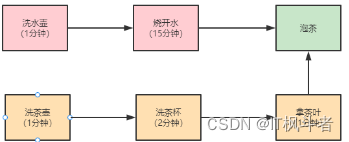
CompletableFuture使用详解(IT枫斗者)
CompletableFuture使用详解 简介 概述 CompletableFuture是对Future的扩展和增强。CompletableFuture实现了Future接口,并在此基础上进行了丰富的扩展,完美弥补了Future的局限性,同时CompletableFuture实现了对任务编排的能力。借助这项能力…...
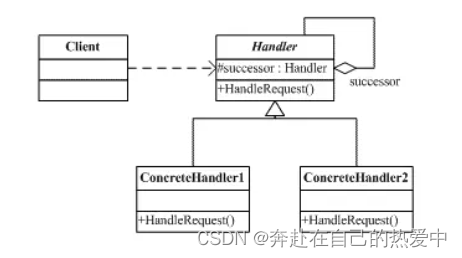
4.15--设计模式之创建型之责任链模式(总复习版本)---脚踏实地,一步一个脚印
一、什么是责任链模式: 责任链模式属于行为型模式,是为请求创建了一个接收者对象的链,将链中每一个节点看作是一个对象,每个节点处理的请求均不同,且内部自动维护一个下一节点对象。 当一个请求从链式的首端发出时&a…...
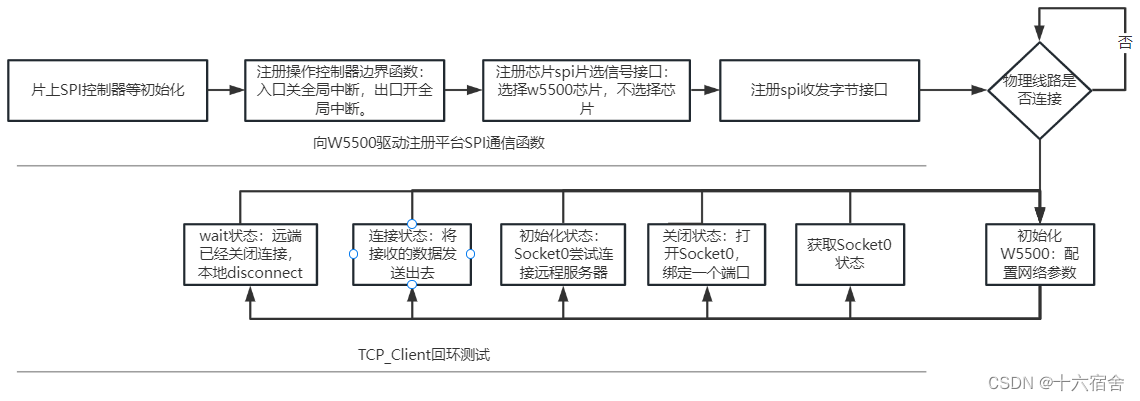
STM32+W5500实现以太网通信
STM32系列32位微控制器基于Arm Cortex-M处理器,旨在为MCU用户提供新的开发自由度。它包括一系列产品,集高性能、实时功能、数字信号处理、低功耗/低电压操作、连接性等特性于一身,同时还保持了集成度高和易于开发的特点。本例采用STM32作为MC…...
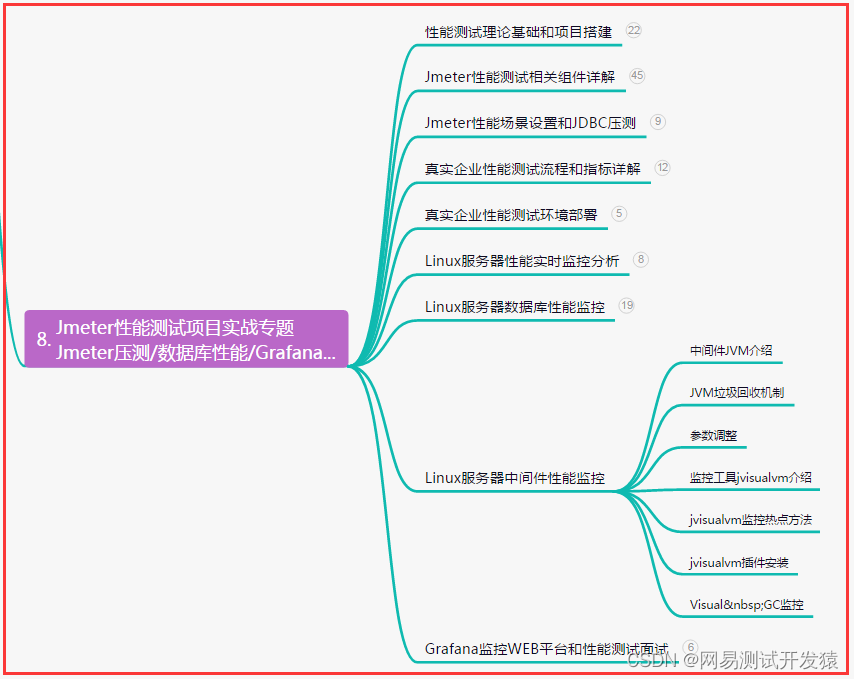
全网最详细,Jmeter性能测试-性能基础详解,终成测试卷王(一)
目录:导读前言一、Python编程入门到精通二、接口自动化项目实战三、Web自动化项目实战四、App自动化项目实战五、一线大厂简历六、测试开发DevOps体系七、常用自动化测试工具八、JMeter性能测试九、总结(尾部小惊喜)前言 发起请求 发起HTTP…...

人工智能概述
一、人工智能发展必备三要素 算法 数据 算力 CPU、GPU、TPU 计算力之CPU、GPU对比: CPU主要适合I\O密集型任务GPU主要适合计算密集型任务 什么样的程序适合在GPU上运行? 计算密集型的程序 所谓计算密集型(Compute-intensive)的程序,就是…...

API接口安全—webservice、Swagger、WEBpack
API接口安全—webservice、Swagger、WEBpack1. API接口介绍1.1. 常用的API接口类1.1.1. API接口分类1.1.1.1. 类库型API1.1.1.2. 操作系统型API1.1.1.3. 远程应用型API1.1.1.4. WEB应用型API1.1.1.5. 总结1.1.2. API接口类型1.1.2.1. HTTP类接口1.1.2.2. RPC类接口1.1.2.3. web…...

从前M个字母中取N个的无重复排列 [2*+]
目录 从前M个字母中取N个的无重复排列 [2*+] 程序设计 程序分析 从前M个字母中取N个的无重复排列 [2*+] 输出从前M个字母中取N个的无重复字母排列 Input 输入M N 1<=M=10, N<=M Output 按字典序输出排列 Sample Input 4 2 Sample Output A B A C A D B A B C B …...

ES forceMerge 强制段合并为什么会提升检索性能?
根据以前的测试,forceMerge段合并,将段的个数合并成一个。带来了将近一倍的性能提升,测试过程文档(请参考我的另外一篇文章):ES优化实战- forceMerge搜索提升测试报告_es forcemerge_水的精神的博客-CSDN博…...

macOS Ventura 13.3.1 (22E261) Boot ISO 原版可引导镜像
本站下载的 macOS 软件包,既可以拖拽到 Applications(应用程序)下直接安装,也可以制作启动 U 盘安装,或者在虚拟机中启动安装。另外也支持在 Windows 和 Linux 中创建可引导介质。 macOS Ventura 13.3.1 为 Mac 提供下…...
html+css+JavaScript+json+servlet的社区系统(手把手教学)
目录 课前导读: 一、系统前期准备 二、前端代码的编写 三、登陆页面简介 四、注册页面 五、社区列表页 六、社区详情页 七、社区发帖页 八、注销 九、访问链接 登陆页面http://175.178.20.77:8080/java106_blog_system/login.html 总结: 课前…...
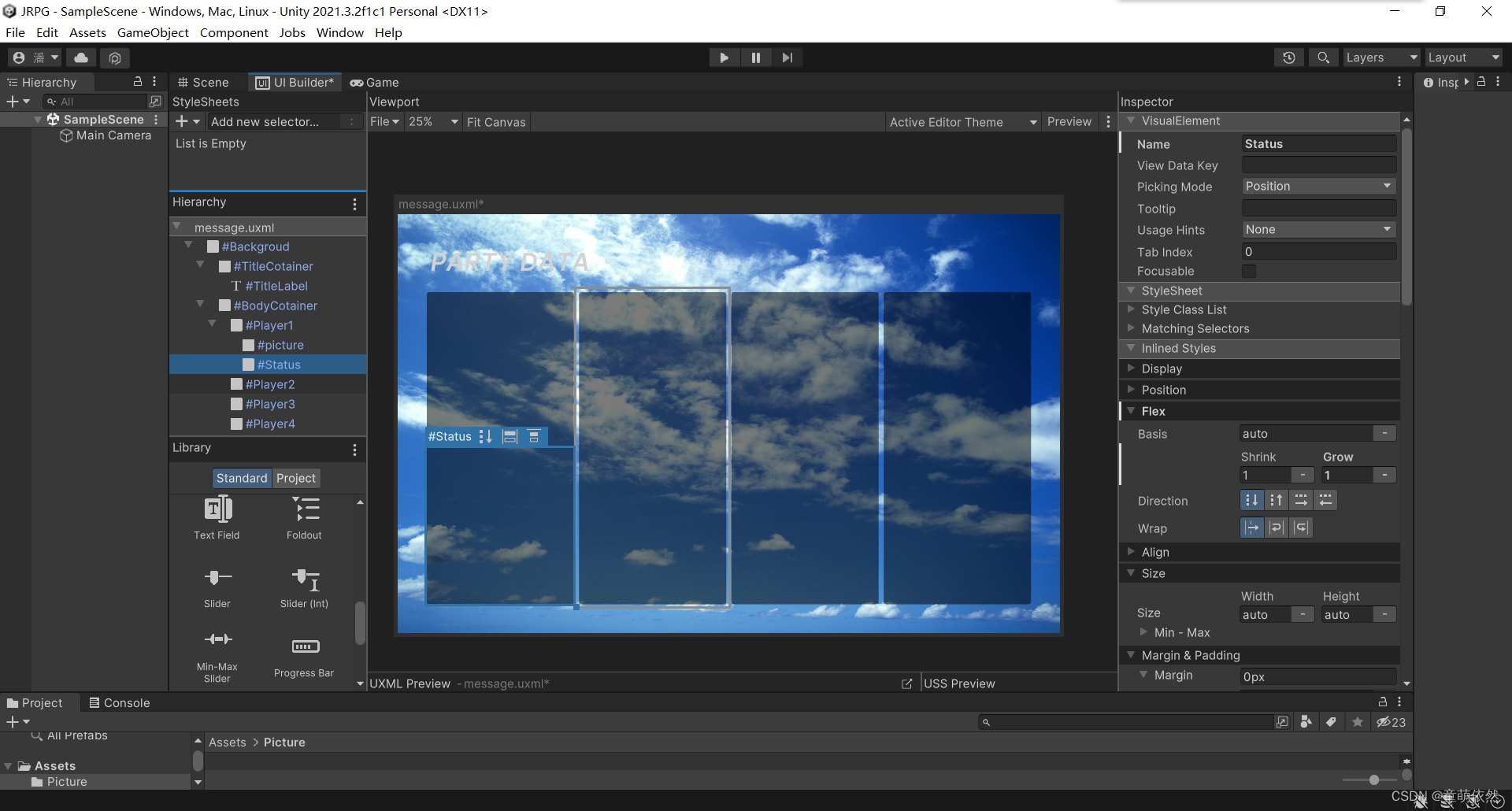
UI Toolkit(1)
UI ToolkitUI Toolkit界面画布设置背景制作UI布局UI Toolkit界面 在Unity 2021LTS版本之后UI Toolkit也被内置在Unity中,Unity有意的想让UI Toolkit 成为UI的主要搭建方式,当然与UGUI相比还是有一定的差别。他们各有有点,这次我们就开始介绍…...

vLive带你走进虚拟直播世界
虚拟直播是什么? 虚拟直播是基于5G实时渲染技术,在绿幕环境下拍摄画面,通过实时抠像、渲染与合成,再推流到直播平台的一种直播技术。尽管这种技术早已被影视工业所采用,但在全民化进程中却是困难重重,面临…...
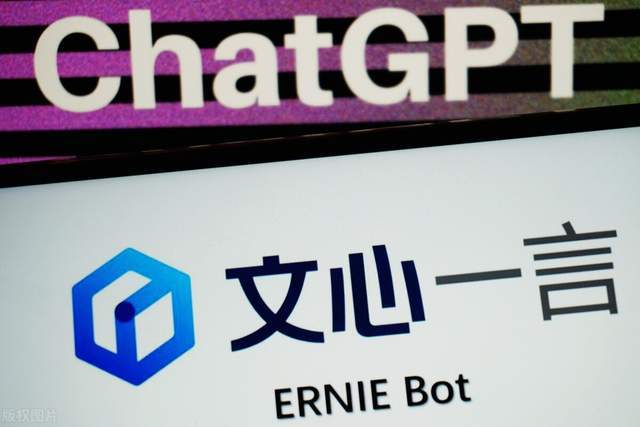
初谈 ChatGPT
引子 最近,小编发现互联网中的大 V 突然都在用 ChatGPT 做宣传:“ChatGPT不会淘汰你,能驾驭ChatGPT的人会淘汰你”、“带领一小部分人先驾驭ChatGPT”。 确实,ChatGPT这个新生事物,如今被视为蒸汽机、电脑、iPhone 般的…...

JAVA练习103-螺旋矩阵
提示:文章写完后,目录可以自动生成,如何生成可参考右边的帮助文档 前言 提示:这里可以添加本文要记录的大概内容: 4月9日练习内容 提示:以下是本篇文章正文内容,下面案例可供参考 一、题目-螺…...
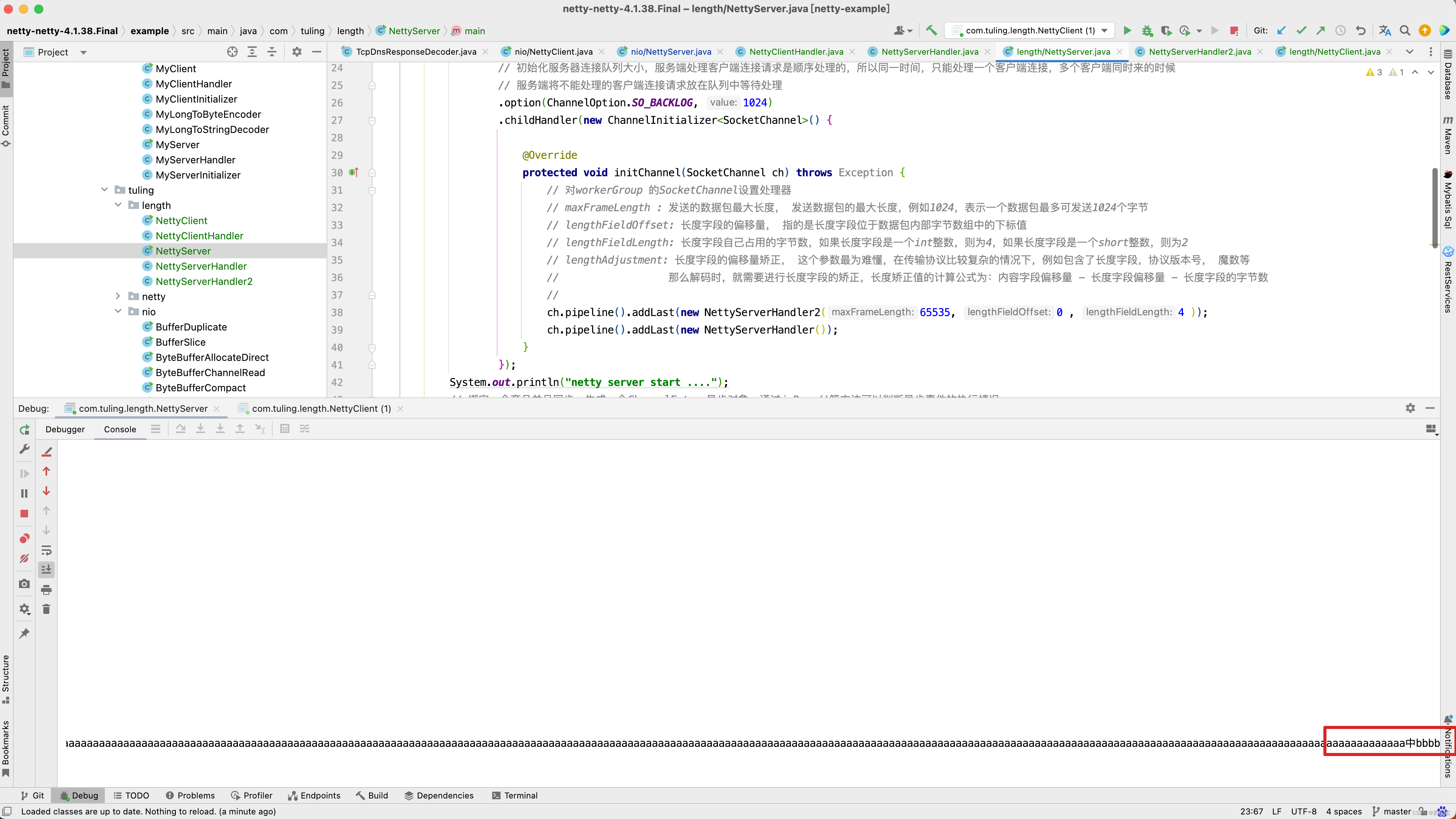
RecvByteBufAllocator内存分配计算
虽然了解了整个内存池管理的细节,包括它的内存分配的具体逻辑,但是每次从NioSocketChannel中读取数据时,应该分配多少内存去读呢? 例如,客户端发送的数据为1KB , 应该分配多少内存去读呢? 例如:…...
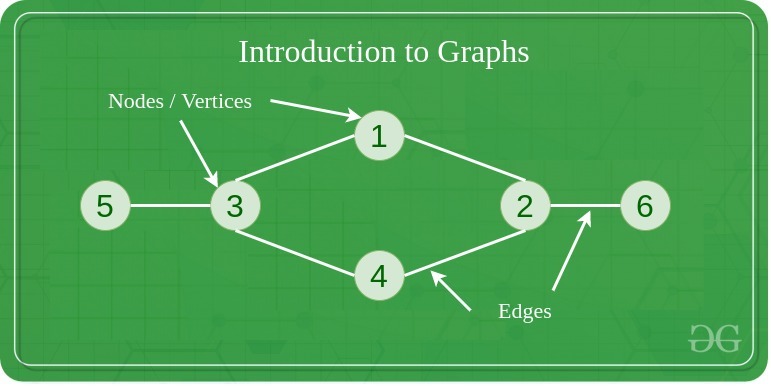
图数据结构与算法
什么是图数据的结构 图是由顶点和边组成的非线性数据结构。顶点有时也称为节点,边是连接图中任意两个节点的线或弧。更正式地说,图由一组顶点 ( V ) 和一组边 ( E ) 组成。该图由 G(E, V) 表示。 图的组成部分 顶点:顶点是图的基本单位。有时,顶点也称为顶点或节点。每个节…...

科普:c语言与C++的区别
C语言和C语言是两种广泛使用的编程语言,尽管它们非常相似,但它们在某些方面也存在不同之处。本文将详细介绍C语言和C语言的区别。 1. 编程范式 C语言是一种过程式编程语言,它的设计目标是为了编写操作系统和其他系统级编程。C语言是一种面向…...
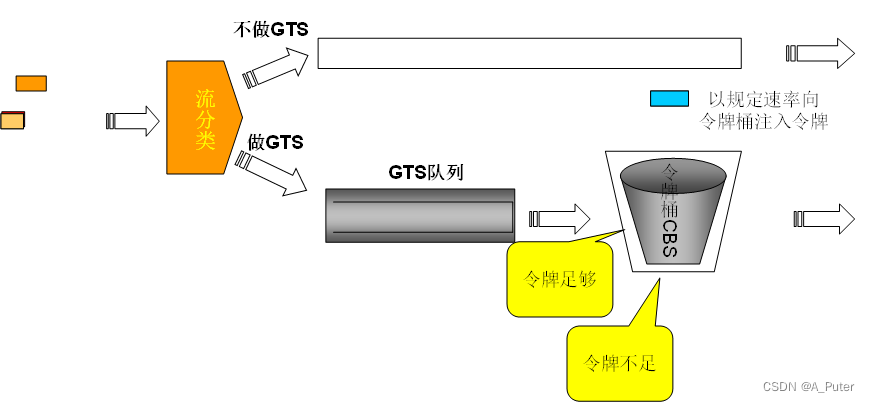
流量整形(GTS和LR)
Generic Traffic Shaping通用流量整形 通用流量整形(简称GTS)可以对不规则或不符合预定流量特性的流量进行整形,以保证网络上下游之间的带宽匹配,避免拥塞发生。 GTS与CAR一样,都采用了令牌桶技术来控制流量。GTS与CAR的主要区别在于:利用CAR进行报文流量控制时,…...

Java接口详细讲解
目录 Java接口概念 Java接口主要有以下特点 Java接口的具体作用 定义接口 实现接口 接口继承 默认方法 静态方法 Java接口概念 Java编程语言中是一个抽象类型,是抽象方法的集合,接口通常以interface来声明。一个类通过继承接口的方式,从而来继承接口的抽象方法。 …...

元宇宙地产暴跌,林俊杰亏麻了
文/章鱼哥出品/陀螺财经随着元宇宙的兴起,元宇宙地产曾一度被寄予厚望,成为各大投资者追捧的对象。然而,最近的一次元宇宙地产价值暴跌再次提醒我们,高收益背后可能伴随着高风险。根据元宇宙分析平台WeMeta的数据显示,…...
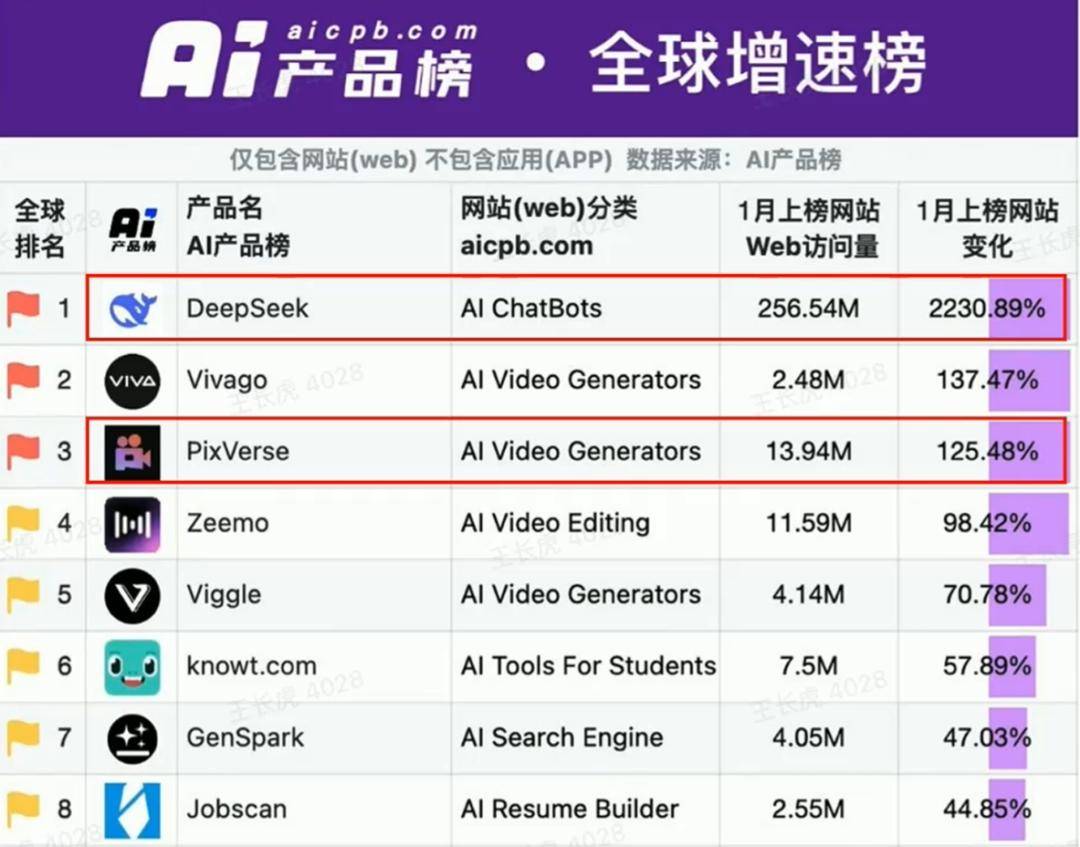
多模态2025:技术路线“神仙打架”,视频生成冲上云霄
文|魏琳华 编|王一粟 一场大会,聚集了中国多模态大模型的“半壁江山”。 智源大会2025为期两天的论坛中,汇集了学界、创业公司和大厂等三方的热门选手,关于多模态的集中讨论达到了前所未有的热度。其中,…...

C++初阶-list的底层
目录 1.std::list实现的所有代码 2.list的简单介绍 2.1实现list的类 2.2_list_iterator的实现 2.2.1_list_iterator实现的原因和好处 2.2.2_list_iterator实现 2.3_list_node的实现 2.3.1. 避免递归的模板依赖 2.3.2. 内存布局一致性 2.3.3. 类型安全的替代方案 2.3.…...

K8S认证|CKS题库+答案| 11. AppArmor
目录 11. AppArmor 免费获取并激活 CKA_v1.31_模拟系统 题目 开始操作: 1)、切换集群 2)、切换节点 3)、切换到 apparmor 的目录 4)、执行 apparmor 策略模块 5)、修改 pod 文件 6)、…...
:滤镜命令)
ffmpeg(四):滤镜命令
FFmpeg 的滤镜命令是用于音视频处理中的强大工具,可以完成剪裁、缩放、加水印、调色、合成、旋转、模糊、叠加字幕等复杂的操作。其核心语法格式一般如下: ffmpeg -i input.mp4 -vf "滤镜参数" output.mp4或者带音频滤镜: ffmpeg…...

sqlserver 根据指定字符 解析拼接字符串
DECLARE LotNo NVARCHAR(50)A,B,C DECLARE xml XML ( SELECT <x> REPLACE(LotNo, ,, </x><x>) </x> ) DECLARE ErrorCode NVARCHAR(50) -- 提取 XML 中的值 SELECT value x.value(., VARCHAR(MAX))…...

Axios请求超时重发机制
Axios 超时重新请求实现方案 在 Axios 中实现超时重新请求可以通过以下几种方式: 1. 使用拦截器实现自动重试 import axios from axios;// 创建axios实例 const instance axios.create();// 设置超时时间 instance.defaults.timeout 5000;// 最大重试次数 cons…...
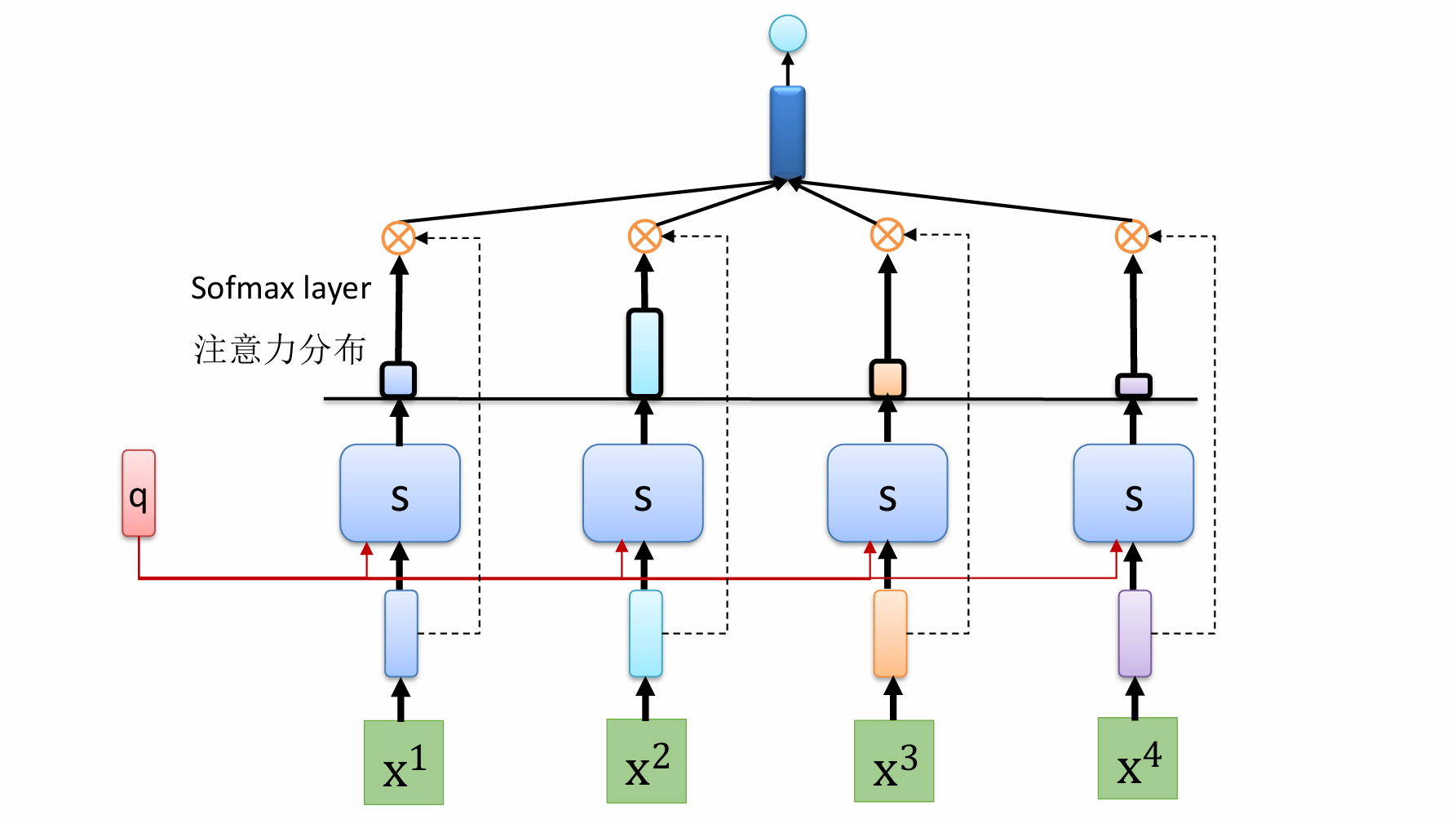
自然语言处理——循环神经网络
自然语言处理——循环神经网络 循环神经网络应用到基于机器学习的自然语言处理任务序列到类别同步的序列到序列模式异步的序列到序列模式 参数学习和长程依赖问题基于门控的循环神经网络门控循环单元(GRU)长短期记忆神经网络(LSTM)…...
中关于正整数输入的校验规则)
Element Plus 表单(el-form)中关于正整数输入的校验规则
目录 1 单个正整数输入1.1 模板1.2 校验规则 2 两个正整数输入(联动)2.1 模板2.2 校验规则2.3 CSS 1 单个正整数输入 1.1 模板 <el-formref"formRef":model"formData":rules"formRules"label-width"150px"…...

Java多线程实现之Thread类深度解析
Java多线程实现之Thread类深度解析 一、多线程基础概念1.1 什么是线程1.2 多线程的优势1.3 Java多线程模型 二、Thread类的基本结构与构造函数2.1 Thread类的继承关系2.2 构造函数 三、创建和启动线程3.1 继承Thread类创建线程3.2 实现Runnable接口创建线程 四、Thread类的核心…...

laravel8+vue3.0+element-plus搭建方法
创建 laravel8 项目 composer create-project --prefer-dist laravel/laravel laravel8 8.* 安装 laravel/ui composer require laravel/ui 修改 package.json 文件 "devDependencies": {"vue/compiler-sfc": "^3.0.7","axios": …...
